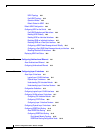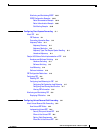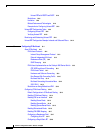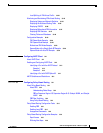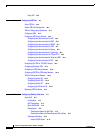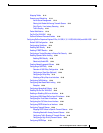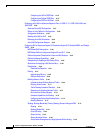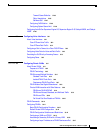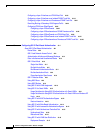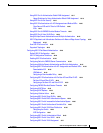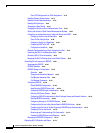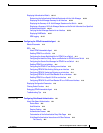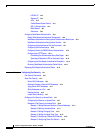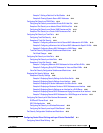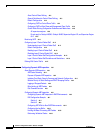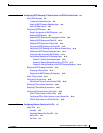
Contents
xxx
Software Configuration Guide—Release 15.0(2)SG
OL-23818-01
Configuring a Layer 2 Interface as a PVLAN Host Port 39-18
Configuring a Layer 2 Interface as an Isolated PVLAN Trunk Port 39-19
Configuring a Layer 2 Interface as a Promiscuous PVLAN Trunk Port 39-21
Permitting Routing of Secondary VLAN Ingress Traffic 39-23
Configuring PVLAN over EtherChannel 39-24
Configuring a Layer 2 EtherChannel 39-24
Configuring a Layer 2 Etherchannel as a PVLAN Promiscuous Port 39-24
Configuring a Layer 2 EtherChannel as a PVLAN Host Port 39-26
Configuring a Layer 2 EtherChannel as an Isolated PVLAN Trunk Port 39-27
Configuring a Layer 2 Etherchannel as a Promiscuous PVLAN Trunk Port 39-28
CHAPTER
40 Configuring 802.1X Port-Based Authentication 40-1
About 802.1X Port-Based Authentication 40-1
Device Roles 40-2
802.1X and Network Access Control 40-3
Authentication Initiation and Message Exchange 40-4
Ports in Authorized and Unauthorized States 40-5
802.1X Host Mode 40-6
Single-Host Mode 40-7
Multiple-Hosts Mode 40-7
Multidomain Authentication Mode 40-7
Multiauthentication Mode 40-8
Pre-authentication Open Access 40-8
802.1X Violation Mode 40-8
Using MAC Move 40-9
Using MAC Replace 40-9
Using 802.1X with VLAN Assignment 40-10
Using 802.1X for Guest VLANs 40-11
Usage Guidelines for Using 802.1X Authentication with Guest VLANs 40-11
Usage Guidelines for Using 802.1X Authentication with Guest VLANs on Windows-XP
Hosts
40-12
Using 802.1X with MAC Authentication Bypass 40-12
Feature Interaction 40-13
Using 802.1X with Web-Based Authentication 40-14
Using 802.1X with Inaccessible Authentication Bypass 40-14
Using 802.1X with Unidirectional Controlled Port 40-15
Unidirectional State 40-16
Bidirectional State 40-16
Using 802.1X with VLAN User Distribution 40-16
Deployment Example 40-17



